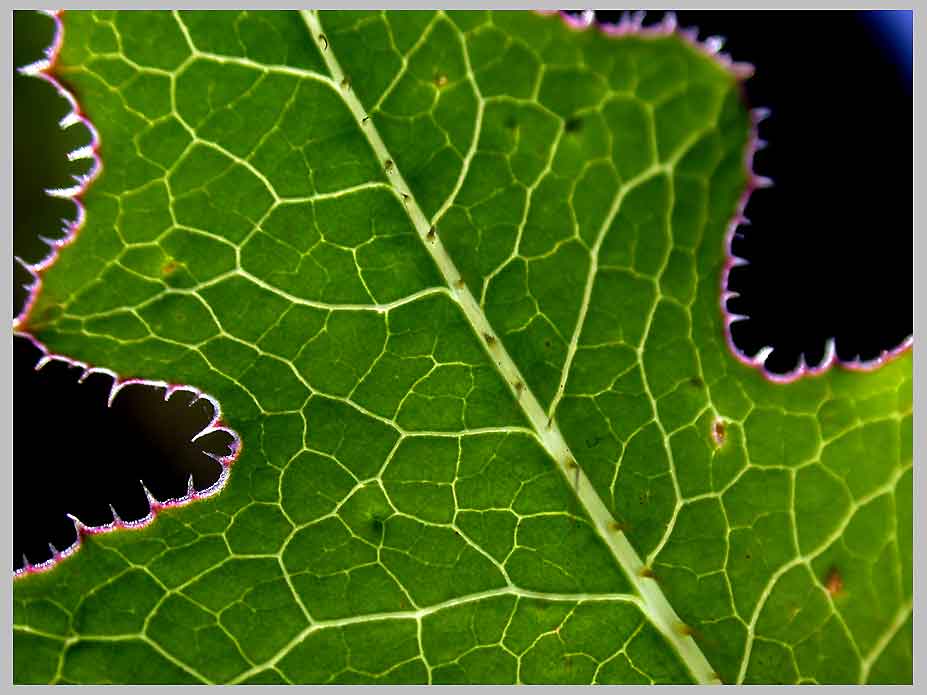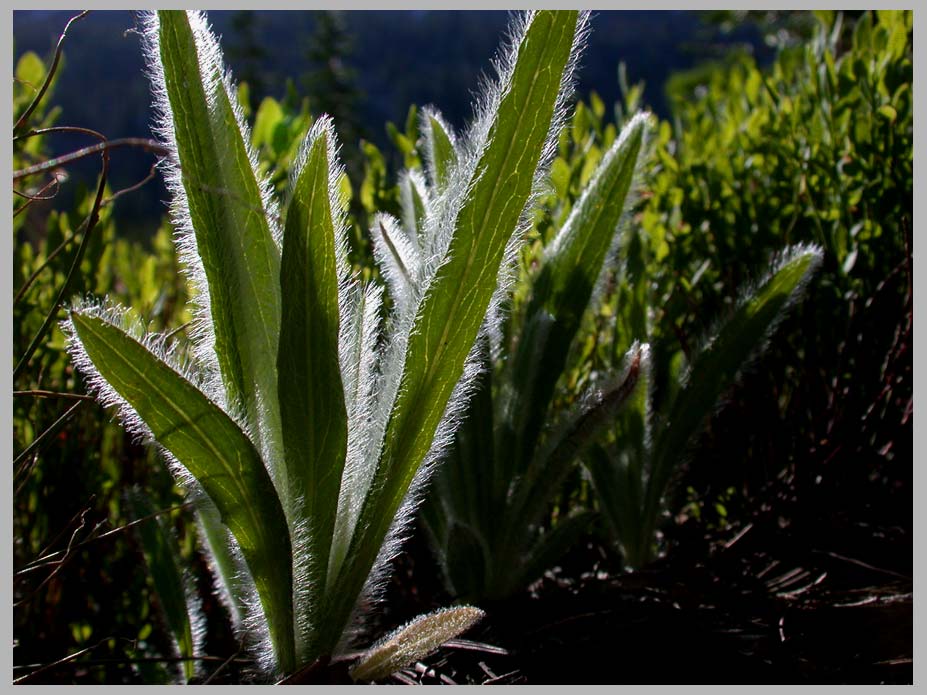

MOUNTAIN MAPLE, new leaves! (Acer glabrum)—June the 22nd, [click photo for next . . . ]
just after spring snowmelt, at 1400 m. . . .
On the road in the American Northwest.
A QUARTET OF LEAVES
(i)
How shall we learn the measure of leaves? How shall we
learn to count the myriad shades of green, the miles of
conduits in their veins, the infinite coastlines of their
perimeters? This image of turning light into the energy
of life. Pure magic! Pure Art!

PRICKLY LETTUCE, skyview! (Lactuca serriola) with characteristic white veins,
and fine prickly spines—June the 23nd at 1050 m. . . . L. serriola is a native of Europe
which grows as a wayside weed in N. America. In Europe, it has a long history as both a vegetable—
it is the closest relative of garden lettuce, depsite its more bitter taste—and can be used both raw
and cooked. The bitterness is caused by an abundance of milky sap. Use by the Greeks
dates back to before the time of Socrates (5th century Bce.) to Pythagoras, calling it Eunuch.
This was because of its reported ability to cause urination and relieve an excess of Eros
(sexual desire).
(ii)
With one's back to the Sun, we see the leaf's texture, its movement in the wind, its inner structure and pattern.
Backlit, the leaf suddenly comes alive, like the music
of a poem one finally remembers to read out loud.

WESTERN HAWKWEED, skyview! (Hieracium albertinum) with characteristic wooly
and basal rosette—July 2nd, 2200 m. . . . H. albertinum is a native of the Wallowas and
Western North America. It shouldn't be confused with the other invasive introduced Hawkweeds
(from Europe), which spread aggressively by wandering underground root systems. There
is some concern that, like loud commercial easily drowns out acoustic classical music,
the non-native relatives from the old country are pushing out Western Hawkweed—
a beautifully adapted alpine plant by any standard—from its native home.
(iii)
Strength in flexibility, we see the leaf dance back and forth
in even a gentle breeze. Always a kind of vibration, much
like a string, it moves about some unseen center, some
invisible mean, growing new strength in the calm pauses
of night, and windless days, the quiet unseen moments
of Nature's fine repose.

SERVICE BERRY or Juneberry or Saskatoon Berry (Amelanchier alnifolia) with
characteristic serrated leave margins beginning about halfway up—July 15nd, 1450 m. . . .
A. Alnifolia is a native of the Wallowas andWestern North America. The berries (pomes, like little apples)
pictured here about half ripe. Come September, however, they easily compete with be better-known
Huckleberry in both sweetness and flavor. One of the essential ingredients of Native American
pemmican, a high energy food containing fat, lean meat, and berries.
(iv)
O sweet sostenuto . . . Given the ratio of a leaf's surface to its
circumference, one might figure out the aerodynamics of its
trembling in the wind. Each pattern of movement for each
species of plant is as unique and unmistakable as the sound
of the indivual voices in a chorus of friends.
